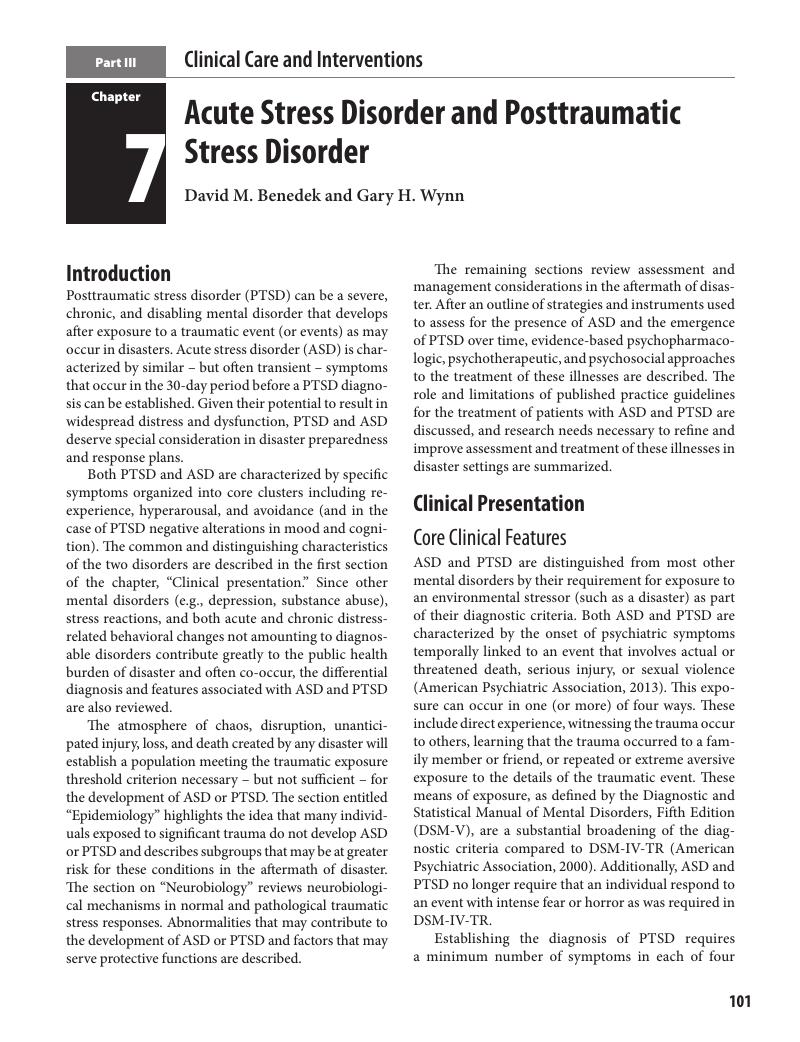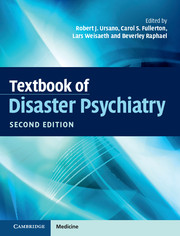Book contents
- Textbook of Disaster PsychiatrySecond Edition
- Additional material
- Textbook of Disaster Psychiatry
- Copyright page
- Contents
- Contributors
- Preface
- Part I Introduction
- Part II Foundations of Disaster Psychiatry
- Part III Clinical Care and Interventions
- 6 Early Interventions for Trauma-Related Problems
- 7 Acute Stress Disorder and Posttraumatic Stress Disorder
- 8 Psychiatric Aspects of Medical–Surgical Disaster Care
- 9 Collaborative Care Interventions for Acutely Injured Survivors of Individual and Mass Trauma
- Part IV Special Topics
- Part V Public Health and Disaster Psychiatry
- Index
- References
7 - Acute Stress Disorder and Posttraumatic Stress Disorder
from Part III - Clinical Care and Interventions
Published online by Cambridge University Press: 02 June 2017
- Textbook of Disaster PsychiatrySecond Edition
- Additional material
- Textbook of Disaster Psychiatry
- Copyright page
- Contents
- Contributors
- Preface
- Part I Introduction
- Part II Foundations of Disaster Psychiatry
- Part III Clinical Care and Interventions
- 6 Early Interventions for Trauma-Related Problems
- 7 Acute Stress Disorder and Posttraumatic Stress Disorder
- 8 Psychiatric Aspects of Medical–Surgical Disaster Care
- 9 Collaborative Care Interventions for Acutely Injured Survivors of Individual and Mass Trauma
- Part IV Special Topics
- Part V Public Health and Disaster Psychiatry
- Index
- References
Summary

- Type
- Chapter
- Information
- Textbook of Disaster Psychiatry , pp. 101 - 123Publisher: Cambridge University PressPrint publication year: 2017

